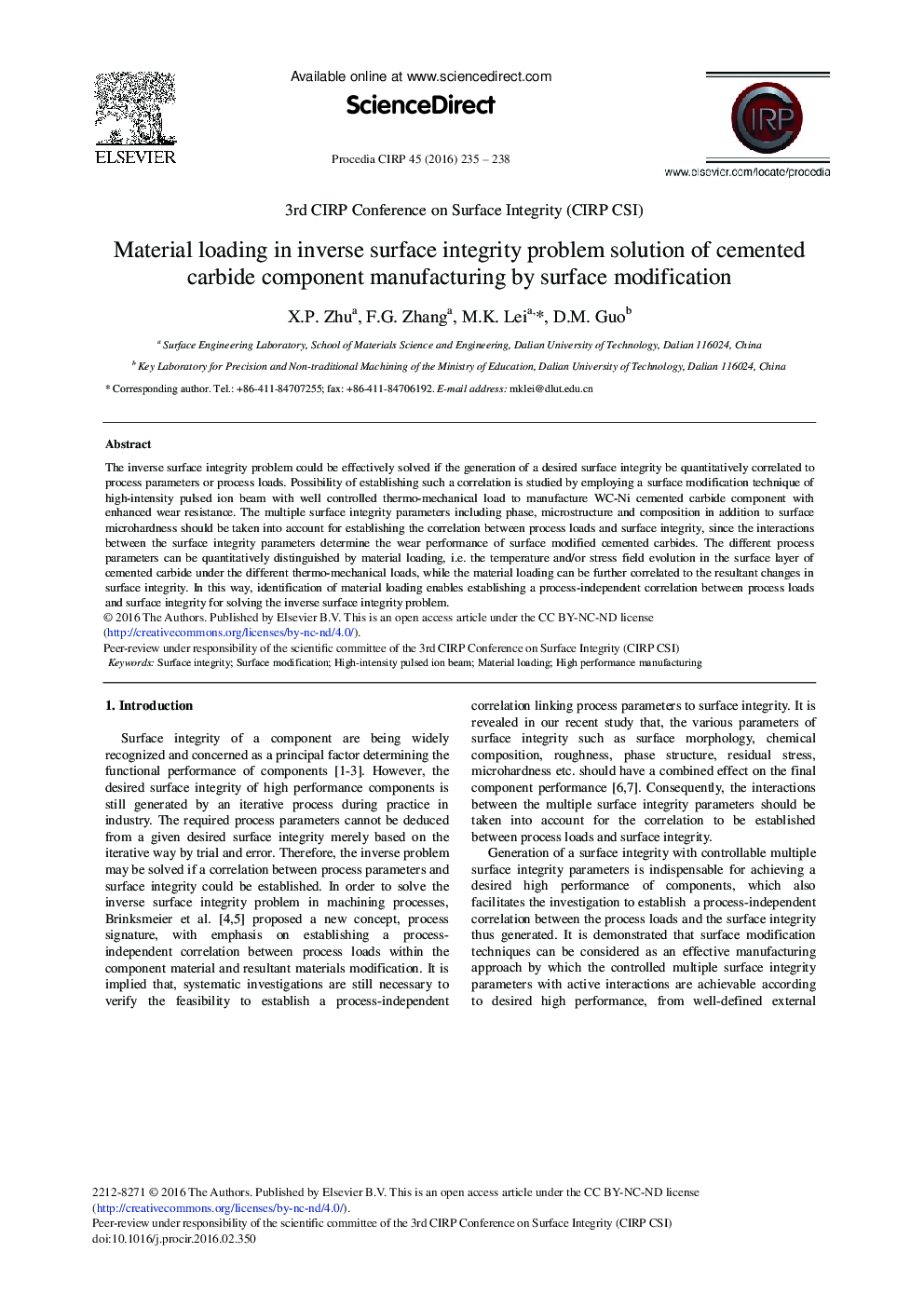| Article ID | Journal | Published Year | Pages | File Type |
|---|---|---|---|---|
| 1698519 | Procedia CIRP | 2016 | 4 Pages |
Abstract
The inverse surface integrity problem could be effectively solved if the generation of a desired surface integrity be quantitatively correlated to process parameters or process loads. Possibility of establishing such a correlation is studied by employing a surface modification technique of high-intensity pulsed ion beam with well controlled thermo-mechanical load to manufacture WC-Ni cemented carbide component with enhanced wear resistance. The multiple surface integrity parameters including phase, microstructure and composition in addition to surface microhardness should be taken into account for establishing the correlation between process loads and surface integrity, since the interactions between the surface integrity parameters determine the wear performance of surface modified cemented carbides. The different process parameters can be quantitatively distinguished by material loading, i.e. the temperature and/or stress field evolution in the surface layer of cemented carbide under the different thermo-mechanical loads, while the material loading can be further correlated to the resultant changes in surface integrity. In this way, identification of material loading enables establishing a process-independent correlation between process loads and surface integrity for solving the inverse surface integrity problem.
Related Topics
Physical Sciences and Engineering
Engineering
Industrial and Manufacturing Engineering
Authors
X.P. Zhu, F.G. Zhang, M.K. Lei, D.M. Guo,
